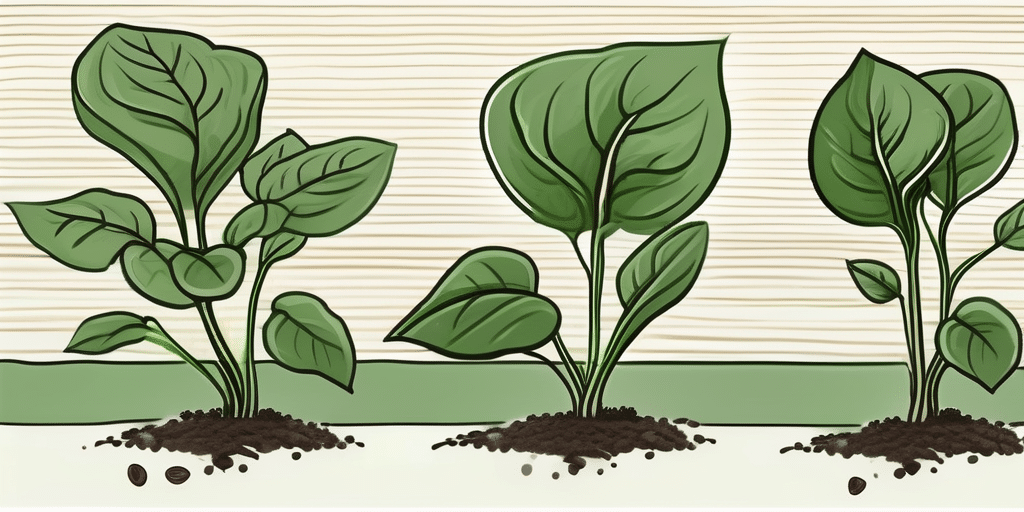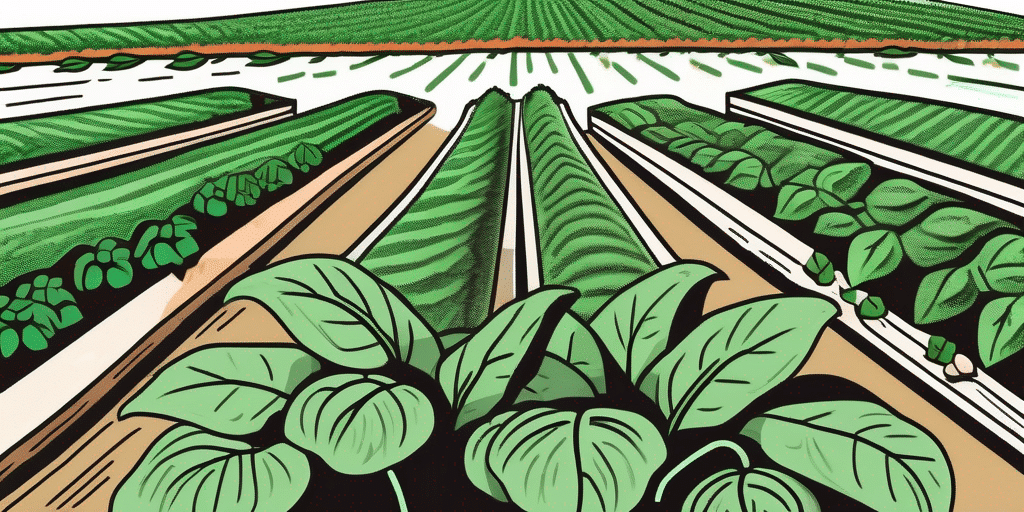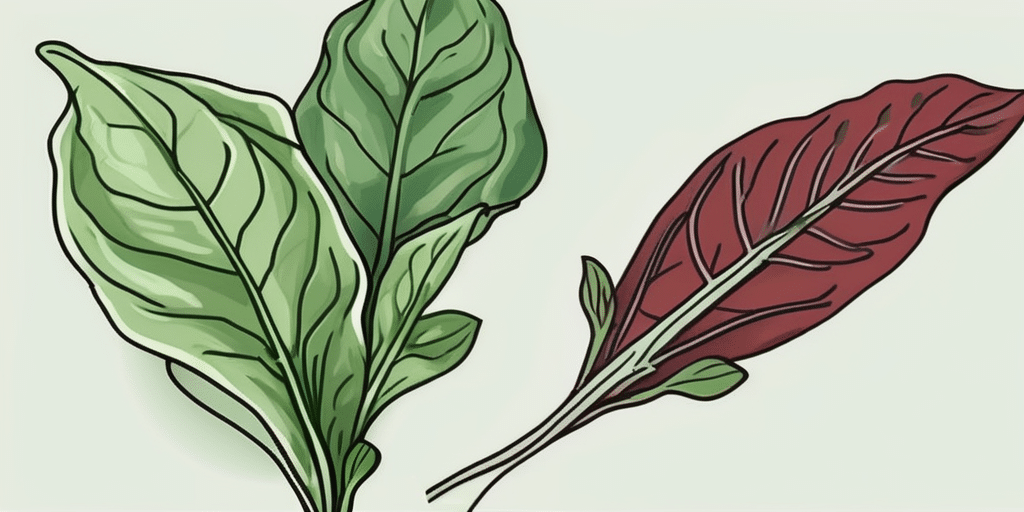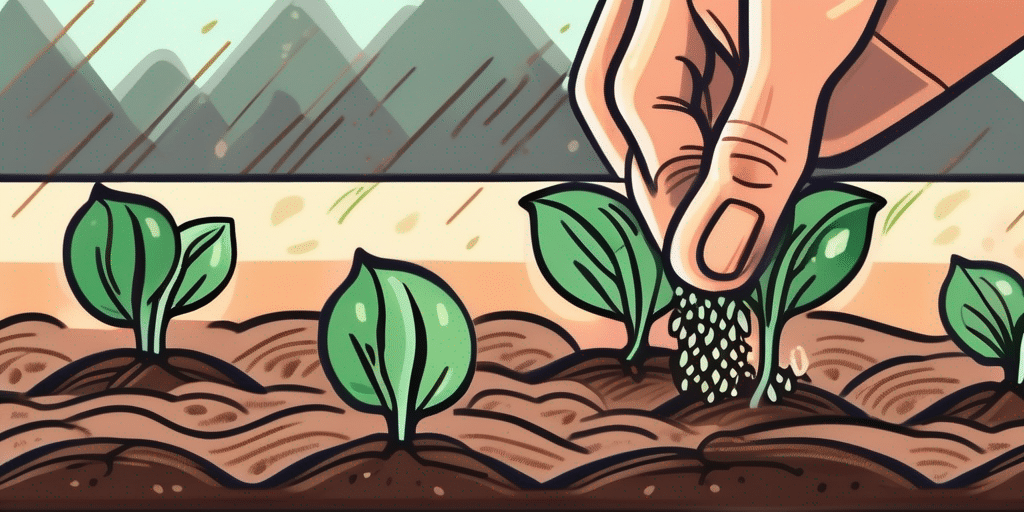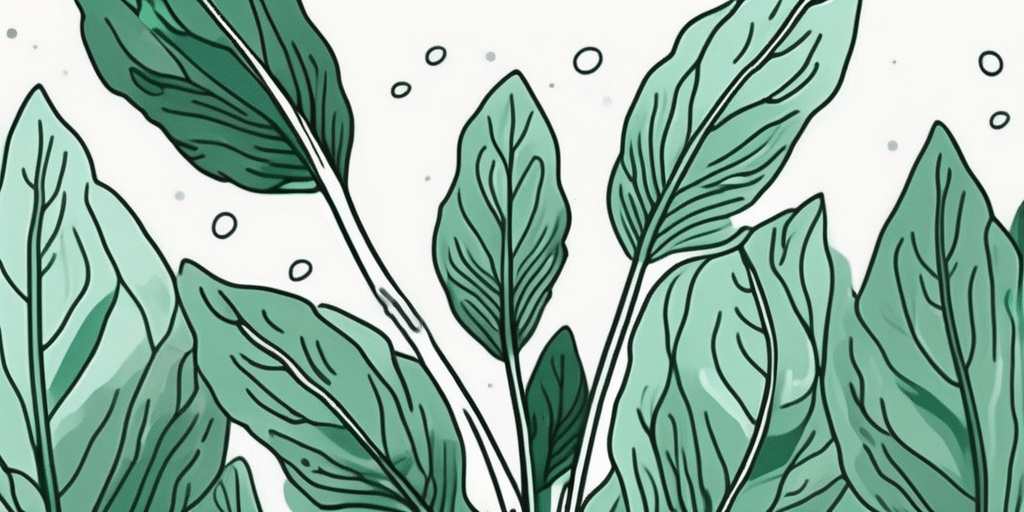If you’re a gardening enthusiast in Georgia, you might be interested in growing Red Malabar Spinach. This leafy green is not your traditional spinach, but it offers a unique twist to your garden and your plate. In this article, we will cover everything you need to know about growing Red Malabar Spinach in Georgia – from when to plant to how to grow it successfully.
Climate & Hardiness Zones in Georgia
Before getting started, it’s crucial to understand the climate and hardiness zones in Georgia. The ideal growing conditions for Red Malabar Spinach include a warm climate with temperatures ranging from 70 to 90 degrees Fahrenheit. Luckily, Georgia fits the bill! The state falls primarily in USDA hardiness zones 7a to 9a, making it a suitable location for growing this heat-loving plant.
Georgia’s climate is characterized by hot and humid summers, with temperatures often soaring above 90 degrees Fahrenheit. The state experiences a significant amount of rainfall throughout the year, particularly in the spring and summer months, providing ample moisture for plant growth. The long growing season in Georgia allows for a wide variety of crops to thrive, including not only Red Malabar Spinach but also tomatoes, peppers, and okra.
Within the USDA hardiness zones 7a to 9a, gardeners in Georgia can experiment with a diverse range of plants that are well-suited to the state’s climate. From cold-hardy vegetables like kale and collard greens that thrive in the cooler months to tropical fruits such as figs and citrus that flourish in the heat, Georgia offers a rich tapestry of options for gardeners of all levels. Understanding the unique climate and hardiness zones of Georgia is essential for successful gardening and bountiful harvests.
When to Plant Red Malabar Spinach in Georgia
Timing is key when it comes to planting Red Malabar Spinach in Georgia. As a warm-weather crop, it thrives in the summer months. The best time to get started is in late spring or early summer when the soil has warmed up and the danger of frost has passed.
You can start your Red Malabar Spinach seeds indoors 4 to 6 weeks before the last expected frost. Alternatively, you can sow seeds directly into the ground once the soil temperature reaches a consistent 70 degrees Fahrenheit or higher.
Red Malabar Spinach, also known as Basella alba, is a vining plant that is not a true spinach but is commonly used as a spinach substitute due to its similar taste and uses in culinary dishes. This tropical vine is native to the Indian subcontinent and thrives in warm, humid climates, making it well-suited for Georgia’s hot summers.
When planting Red Malabar Spinach, choose a sunny location with well-draining soil. This plant loves sunlight and requires at least 6-8 hours of direct sunlight daily to flourish. Additionally, adding organic matter such as compost to the soil can help improve its fertility and drainage, ensuring optimal growth for your Red Malabar Spinach.
When to Harvest or Pick Red Malabar Spinach in Georgia
One of the great advantages of growing Red Malabar Spinach is its versatility in harvesting. You can enjoy baby leaves for a milder flavor or wait for the plants to mature for a more robust taste.
The leaves can be harvested continuously as the plant grows throughout the summer. When the plants reach a height of 6 to 8 inches, start by picking the outer leaves, leaving the center intact for continued growth. Regular harvesting will encourage the plant to produce more leaves, ensuring a bountiful harvest.
Remember to harvest in the early morning when the leaves are crisp and full of moisture. This will result in the best flavor and texture.
Red Malabar Spinach, also known as Basella alba, is a tropical vine that thrives in warm climates like Georgia. This leafy green is not a true spinach but is often used as a spinach substitute due to its similar taste and texture. It is rich in vitamins A and C, iron, and calcium, making it a nutritious addition to your diet.
When harvesting Red Malabar Spinach, it’s essential to inspect the leaves for any signs of damage or pests. Look out for holes, discoloration, or insect eggs, and remove any affected leaves to prevent the spread of pests in your garden. Washing the harvested leaves thoroughly before consumption is also recommended to ensure food safety.
Frequently Asked Questions
Can Red Malabar Spinach be grown in containers?
Absolutely! Red Malabar Spinach can be grown successfully in containers. Select a container with a minimum depth of 8 inches to accommodate the plant’s root system. Ensure the container has proper drainage holes to prevent waterlogging.
What type of soil does Red Malabar Spinach prefer?
Red Malabar Spinach thrives in well-draining soil that is rich in organic matter. Amend your garden or container with compost or well-rotted manure to improve soil fertility and drainage capabilities.
How often should I water my Red Malabar Spinach?
Red Malabar Spinach enjoys consistently moist soil, but avoid overwatering to prevent root rot. Water the plants deeply once a week or more frequently if the soil feels dry to the touch.
Are there any pests or diseases I should be aware of?
Fortunately, Red Malabar Spinach is relatively pest and disease resistant. However, keep an eye out for common garden pests such as aphids and slugs. If you notice any signs of infestation, treat the plants with organic pest control methods or consult your local gardening center for advice.
Can I save seeds from Red Malabar Spinach plants?
Yes, you can save seeds from mature Red Malabar Spinach plants. Allow a few plants to bolt and produce flowers. Once the flowers have faded, they will form small green seed pods. Let the pods turn brown and dry on the plant before harvesting. Collect the seeds and store them in a cool, dry place for future planting.
Growing Red Malabar Spinach in Georgia can be a rewarding experience. Its vibrant red stems and glossy green leaves add an attractive touch to any garden. With the right timing, care, and harvesting techniques, you’ll soon be enjoying this unique and flavorful green in your favorite dishes!
When it comes to planting Red Malabar Spinach, it’s important to consider the climate and growing conditions of your specific region. In Georgia, the warm and humid summers provide an ideal environment for this tropical spinach variety. However, it’s essential to provide some shade during the hottest parts of the day to prevent leaf scorching.
In addition to its ornamental value, Red Malabar Spinach is also a nutritional powerhouse. Packed with vitamins A, C, and K, as well as iron and calcium, this leafy green is a fantastic addition to any healthy diet. Its mild flavor and tender texture make it a versatile ingredient in salads, stir-fries, and smoothies.
Join the How to Grow Everything Community
Ready to take your gardening skills to the next level? Subscribe for free to How to Grow Everything and learn how to build the garden of your dreams! Receive personalized gardening advice tailored to Georgia’s climate, your grow zone, and your experience level. With our family’s commitment to providing the best gardening tips and special offers, you’ll have everything you need to cultivate your Red Malabar Spinach and more. Join our community today and start growing with confidence!

